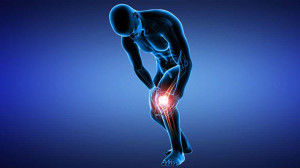The Best and Worst Things an Athlete Can Do to Recover from Patellar Tendonitis
 Tendonitis of the knee (also known as patellar tendonitis or “jumper’s knee”) is a highly common injury among athletes.
Tendonitis of the knee (also known as patellar tendonitis or “jumper’s knee”) is a highly common injury among athletes.
Several well-known professionals — including third baseman Brandon Inge, pitcher Oliver Perez, and tennis player Rafael Nadal — have all struggled with chronic cases of patellar tendonitis throughout their careers.
Because tendonitis of the knee is common and comes on gradually, many athletes assume that they don’t need to take their recovery from it as seriously as they would need to take a more acute injury like an ACL tear. In reality, though, chronic tendonitis can be incredibly debilitating and could potentially sideline an athlete completely.
Read on to learn about some of the most common mistakes athletes make when trying to manage their tendonitis and what you should be doing instead.
What is Patellar Tendonitis?
Many athletes suffer from patellar tendonitis without even knowing exactly what it is. Patellar tendonitis occurs when the tendon that connects the tibia (shin bone) and patella (knee cap) becomes irritated and inflamed.
Patellar tendonitis most often results from repetitive knee strain. This repetitive strain creates several small tears in the tendon. Over time, these tears weaken the tendon and cause it to become inflamed.
Some of the most common issues that contribute to patellar tendonitis include:
-
-
Tight muscles in the lower body
-
-
-
Lower body muscle imbalances
-
-
-
Misalignment in the feet, ankles, or legs
-
-
-
Being overweight or obese
-
-
-
Wearing improper shoes
-
-
Playing on hard or uneven surfaces
Symptoms of patellar tendonitis often come on gradually and usually aren’t noticeable right away. When they do start to notice symptoms, most people report experiencing some pain and tenderness around their kneecap, especially when they’re getting down into or standing up from a squatting position. Some also notice swelling and a burning sensation.
These symptoms are usually sporadic at first and get worse and last longer as the tendon undergoes more stress and damage.
What to Do When Treating Patellar Tendonitis
If you have started to notice some of these symptoms and think you might have patellar tendonitis, there are a few things you should do to minimize your pain and reduce the damage to your tendon:
-
-
Stop the activities that are straining your knee and causing you the most pain
-
-
-
Rest your irritated knee and ice it regularly in 20-minute increments
-
-
Wear a knee brace to provide compression and extra support
You can use over-the-counter pain relievers like ibuprofen or aspirin to help reduce pain and swelling (just avoid taking them too frequently, as the pain relief they provide might cause you to think you’re healed before you actually are). There are also use essential oils like peppermint, frankincense, and cypress to help improve blood flow and minimize your pain. You can try using pain relief devices as well.
After your pain starts to subside, you can start incorporating strengthening exercises (slow wall sits, isometric holds, etc.) to help build up the muscles around the tendon and give it extra support.
It’s important to remember that tendonitis does not go away overnight. Most people notice a reduction in pain within 3-4 weeks, especially if they’re sticking to a consistent treatment plan. The actual tendon repair, though, takes around three months. Be careful with your knee during that time so you don’t damage it again.
What Not to Do When Treating Patellar Tendonitis
Now that you know how to manage patellar tendonitis and promote proper healing, it’s also essential to cover what you should not do.
Some common mistakes that you ought to avoid include:
-
-
Not giving the body sufficient rest — it takes time for your body to repair the damaged tendon. If you continue to train with an inflamed, irritated tendon, you’re going to end up adding time to your recovery process when you finally do decide to take a rest.
-
-
-
Resting too much — on the other hand, if you don’t do any rehabilitation exercises, you’re going to end up weakening your muscles and tendons and increasing your risk of injury in the future. When you feel your pain starting to diminish, it’s time to add strength exercises back in.
-
-
Not scaling your training — when they are ready to return to regular practices, many athletes also make the mistake of trying to jump back in at the same level they were training before. This, in turn, can cause a lot of damage and send you right back to the place you were in before. Start slow and ease your way back into your workouts.
Final Thoughts
As you can see, there’s a lot that can potentially go wrong when you’re trying to recover from patellar tendonitis. But, if you follow these steps, you’ll be able to avoid complications and get back into the game sooner than if you’d tried to play through the pain.










